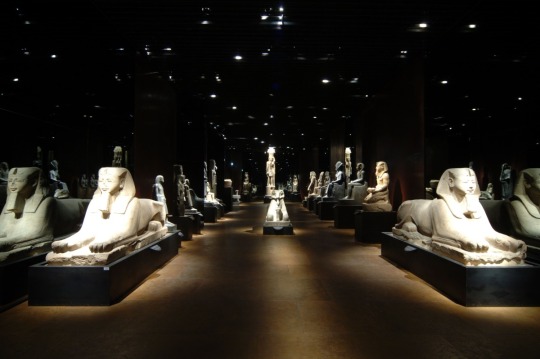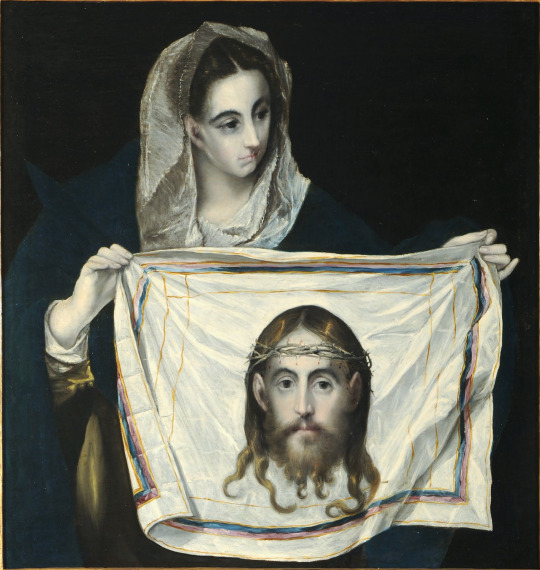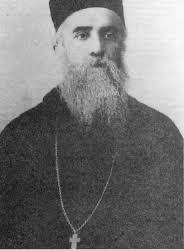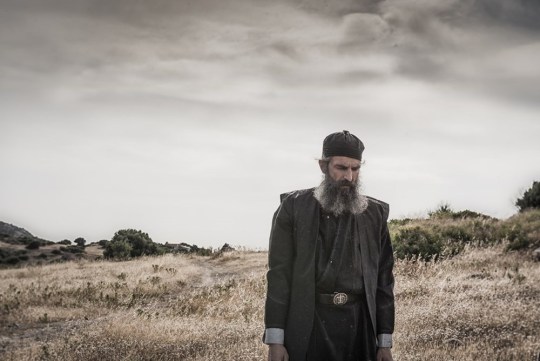#Christian Greco
Explore tagged Tumblr posts
Text
Museo Egizio di Torino: nuovo allestimento per le grandiose statue di dei e faraoni della Galleria dei Re
Museo Egizio di Torino: nuovo allestimento per le grandiose statue di dei e faraoni della Galleria dei Re
Redazione Le magnifiche statue di dei e faraoni della Galleria dei Re del Museo Egizio di Torino saranno protagoniste, a partire dal 23 aprile, di un nuovo allestimento temporaneo nell’atrio e sotto le arcate del Museo Egizio e dell’Accademia delle Scienze, dal titolo “Verso la nuova Galleria dei Re”. L’esposizione, frutto della collaborazione tra le due istituzioni, offrirà fino a ottobre ai…

View On WordPress
#Accademia delle Scienze di Torino#Antico Egitto#Bernardino Drovetti#Christian Greco#egitto#egittologia#Ernesto Schiaparelli#Evelina Christillin#Giulio Cordero di San Quintino#Jean-François Champollion#Massimo Mori#mostre#Museo Egizio#Museo Egizio di Torino#Silvio Curto
2 notes
·
View notes
Text

Il ministro Sangiuliano vuole rimuovere dal suo posto il direttore del Museo Egizio di Torino Christian Greco, al suo posto è indeciso se nominare Galileo Galilei o Cristoforo Colombo.
C'è una petizione per impedirlo: firmala!
1 note
·
View note
Text
Lega vs Christian Greco in pochissime parole:
youtube
0 notes
Text

St. Veronica with the Holy Face, El Greco, ca. 1580
#art#art history#El Greco#Domenikos Theotokopoulos#religious art#Christian art#Christianity#Catholicism#St. Veronica#Baroque#Baroque art#Spanish Baroque#Spanish art#Cretan art#16th century art#oil on canvas#Museo de Santa Cruz
301 notes
·
View notes
Text

The Annunciation
Artist: El Greco (Doménikos Theotokópoulos) (Greek, 1541-1614)
Date: c. 1576
Medium: Oil on canvas
Collection: Museo Nacional Thyssen-Bornemisza, Madrid, Spain
The Annunciation
In Luke 1:26–39, Gabriel arrives at the home of a young Jewish girl named Mary, a virgin betrothed to a man named Joseph, to tell her that she would become pregnant by means of the Holy Spirit. When the baby was born, she was to call Him Jesus, a name that means “The Lord Is Salvation.” The angel also tells Mary that the baby she would bear would rule an everlasting kingdom and be called “the Son of the Highest.”
The Annunciation is dear to Christians because it is a prophecy of the Savior’s birth, a herald of the grace and peace that would come to mankind from God through Jesus Christ. The Annunciation was a main subject of Christian art during the Middle Ages and the Renaissance, with the virgin and the angel commonly used as symbols of purity and grace. The Feast of Annunciation is observed on March 25 by both the Roman Catholic Church and the Eastern Orthodox Church, where the emphasis is placed on Mary as the Theotokos, or “mother of God.” It is unfortunate that Gabriel’s announcement, which lifts up Jesus as “the holy one” and “the Son of God” (Luke 1:35), should be reinterpreted as an occasion for lifting up Mary, the humble recipient of God’s grace (Luke 1:30, 46–48).
The virgin birth had been foretold (Isaiah 7:14), and “when the set time had fully come, God sent his Son, born of a woman, born under the law, to redeem those under the law, that we might receive adoption to sonship” (Galatians 4:4–5). Mary was chosen as the woman through whom the Messiah came. The good news that was to change the whole world came first to Mary in an event we now call the Annunciation.
Painting Description
In the course of his life, EI Greco painted numerous versions of the Annunciation, thus allowing his stylistic development to be traced through his changing treatment of this Biblical episode. This painting, dated around 1576, is thought to be one of the last versions executed in Italy, and is clearly influenced by the Venetian style. From her prayer-stool at the left of the painting, the Virgin listens attentively to the message of the Archangel, a figure rendered very much in the style of Veronese. The light and the colouring owe much to Titian, a painter EI Greco admired, while the arrangement of the figures and the treatment of the drapery strongly recall the work of Tintoretto. Here, EI Greco places the figures within a simple architectural setting, loosely framing them to make the scene more realistic.
#painting#artwork#oil on canvas#the annunciation#biblical story#christianity#christian art#virgin mary#angels#archangel gabriel#good news#clouds#gospel of luke#book of isaiah#bible scriptures#fine art#oil painting#greek culture#greek painter#el greco#european art#16th century painting
16 notes
·
View notes
Text

Nativity
El Greco, 1605
Oil on canvas, 128 cm diameter, sanctuary Nuestra Señora de la Claridad, Illescas, Toledo, Spain
10 notes
·
View notes
Text

St Francis in ecstasy receiving the stigmata
El Greco
Museu de Artes São Paulo
#found#art#christian art#saint francis of assisi#Saint Francis#stigmata#el greco#museu de arte são paulo#são paulo#MASP#all saints day#painting#saints
9 notes
·
View notes
Photo

Christus, der die Blinden heilt, um 1570 von El Greco (1570, oil on canvas)
#kunst#kunstwerk#art#artwork#el greco#religiöse kunst#religious art#jesus#christ#christus#christentum#christianity#bibel#bible#gott#god#vater#father#herr#lord#beten#pray#glaube#faith#kirche#church#wunder#miracle#heilung#cure
28 notes
·
View notes
Text
Gli Egizi e i doni del Nilo: a Forte dei Marmi un viaggio nel tempo in 24 reperti
MOSTRE | Gli Egizi e i doni del Nilo: a Forte dei Marmi un viaggio nel tempo in 24 reperti L’esposizione, in collaborazione con il Museo Egizio di Torino, resterà aperta nel Forte di Leopoldo fino al 2 febbraio 2025.
Redazione L’antico Egitto approda a Forte dei Marmi con una mostra del Museo Egizio di Torino dal titolo “Gli Egizi e i doni del Nilo”, curata da Paolo Marini, curatore e coordinatore scientifico delle mostre itineranti del Museo. Promossa dalla Fondazione Villa Bertelli e dal Comune di Forte dei Marmi, l’esposizione è stata inaugurata al Forte di Leopoldo il primo agosto, dal sindaco di Forte…
#Antico Egitto#arte egizia#Christian Greco#egittologia#Forte dei Marmi#Forte di Leopoldo#mostre#Museo Egizio#Museo Egizio di Torino#Paolo Marini#Villa Bertelli
0 notes
Text
Man of God: A review
After three years since its release (time flies 😳) I decided to finally watch Man of God and see for myself what all the praise and all the criticism were about. For those who don’t know, Man of God is a Greek - Russian movie about the life of Saint Nektarios of Aegina island.
The information around the reception of the movie has been jarring with most believers speaking of a rare masterpiece while most atheists spoke of one of the most terrible movies full of propaganda they had ever seen etc
Much to my dismay, this was another reminder that in this country atheists / agnostics are not any more reliable than fiercely religious people.
The truth of course is somewhere in between. The film is decent, in no way a masterpiece and in no way the worst movie you will ever see. It can actually keep your attention well until the end. But you must KNOW why you watch it. Atheists complaining for the money they wasted on it, on a movie that was very obviously about a man supposed to have reached sainthood and be venerated as such, I am sorry but it is their problem if they could not figure out they would not be interested in the content.
I could even recommend watching this movie but only if you know why you watch it and only after I will briefly give you its pros and cons.
Pros:
The acting is pretty good. Some people criticised it, however the problem they saw and perhaps misinterpreted as bad acting was different and I will mention it promptly. In any case, the acting is good, the casting is mostly good, Ares Servetalis is generally well chosen as the main character. I also enjoyed Loulis, Karabeti and a very theatrical Stankoglou in their short roles. Mickey Rourke is the international star who makes a very short cameo here and he is also good.
This film is particularly good for the images and insight into Christian Orthodoxy it provides. There is complete accuracy regarding the vestments, the way both a solemn and true but also a deceitful priest typically act, the way the Synod, Ecclesiastical schools, the monasteries operate and so on. From this perspective, it was interesting to watch.
The make up is great. Saint Nektarios starts as a man in his early 40s and we see all the stages as he ages and his health deteriorates significantly very accurately. This is actually where Servetalis’ acting shines the most, too.
The cinematography is nice, it has pretty imagery from rural Greece and a few nice settings in religious buildings. It is nowhere near the level of views Greece can naturally and even religiously offer but it was overall aesthetically pleasing.
Despite its several flaws, the film was able to move me and cause me (suitable) discomfort in certain parts.
Cons:
This movie would be unanimously considered a lot better, had it not been for the frankly crazy idea to be filmed in English. So, you have a Greek movie with Greek actors playing Greek characters in a Greek setting in 19th-20th century Greece speaking English to each other. Even worse is the choice to sprinkle with a little Greek here and there, for example priests speak in English but chant in Greek, Nektarios visits a Greek woman and speaks to her in English but then immediately afterwards speaks to the maid in Greek (???what the hell), a drunken man sings in Greek and then addresses the priest in English. It’s frankly lunatic and I can’t believe how everyone - director, producers, screenwriters, actors - thought that just because the movie would have an international release, this was a justifiable decision.
Like I said, some people accused the movie of bad acting. Here’s the problem: the actors tried their best and mostly were very good, however they gave so much emphasis on the struggle to pronounce English as well as possible (it is a known fact that Greek speakers struggle with the English accents), that this was making their dialogues slow and very cautious which was obviously making dialogue heavy scenes seem very unnatural. It does not help at all that the protagonist has clearly one of the weakest English accents in the cast. Servetalis is furthermore naturally very soft spoken but while it is beautiful in Greek, in his weak English it just sounds weird. Heads up for Loulis though - his English was freaking amazing in my humble opinion. And in general, if you knew how much Greek speakers often struggle with English accents, you’d understand that most of the actors really outdid themselves. Hence, the acting is good.
The pacing and the script of the movie are just bad. The movie starts without giving the main character’s background at all and without giving any insight into how the animosity against him was developed amongst the other bishops of Alexandria. Then it’s mostly dialogue heavy and it’s through the dialogues that we explore the main character and so many people may feel they remain emotionally detached from him. In fact, Servetalis also interprets the character in a somewhat detached, suppressed, “hovering above the ground” way and although I totally understand this approach, it is not assisted with that poor script and the out of place English to make the audience feel connected to him more. The English script is also very unnatural, most of the responses are like “Yes, I will” and “No, I do not” as if we are back to English A1 Class.
I already said the settings were okay, however there was room for improvement. I hoped a Russian director would not follow the same typical preference of Greek directors for narrow frames and a lot of close ups but apparently not. Neither the rich Church funding this nor even Russia could help with the budget and finally get a Greek movie with big sets and wide camera shots?! lol 🥲 I will open a champagne the day we get such a movie.
There are some goofs, i.e Nektarios ages so much and everyone else remains in the same age XD
Regarding the Propaganda claim:
I suppose this came only by biased atheists because, no, there is actually no propaganda in the film. It is a Christian movie made for Christian and Christian-tolerant audiences, who either accept or are open to the established belief that Nektarios had performed miracles in his lifetime. And in fact, the reference to his miracles is surprisingly fleeting for a movie that is funded by the Church. It’s just one small scene and then one very short mention and that’s all. There is also nothing else that would make this movie eligible for propaganda accusations - Nektarios is firm in his faith of course and especially in his Jesus-like selflessness, other people around him express doubt or prefer pure reason. Some are good people and question religion. Some are evil people and question religion. But most importantly, many are priests and are straightforwardly portrayed as foul deceivers, traitors, liars etc. Not only do I not see propaganda in this but I was personally impressed by the Church’s admission of what kind of people often infest it (of course it helps that all these people lived 1-2 centuries ago lol). Of course, the movie does accept that he performed miracles and thus was holy. But it is a Christian movie about an established venerated Christian saint… right? If for example I watched a movie made about a religious figure by the believers of this - any - religion, should I not expect that the figure would be presented as admirable or even holy? I hope you get my point. If you know what you are watching and why you are watching it, there is no case you will find anything problematic in it.
Anyway, these were my thoughts regarding the movie. The general score it gets in IMDb, produced as the median from the extremely high and low ratings of believers and atheists respectively, is fairly accurate and what I feel would be my personal score as well: 7.
So if you are a Christian or a Christian Orthodox and considered watching this (all these three years before I came around to watch it 😅), sure go ahead!

Saint Nektarios of Aegina island

Scene from the movie
#greece#movies#Christianity#Christian orthodoxy#movie review#Greek movies#Greek cinema#Greco Russian movie#Saint Nektarios of Aegina#tw religion#Greek history#Greek culture#Aegina#saronic islands#Sterea Hellas#central greece#Greek islands#autocorrect changing saronic into satanic and then into sardonic SHUT UP 😂
12 notes
·
View notes
Text

Greco-Roman Statue, presumably of a god, literally defaced and into which a well-hewn cross has been carved.
6 notes
·
View notes
Text
The Top 25 Perfumes Of The 21st Century... So Far
Here we go... a list of the Top 25 best perfumes of the century so far. -- Are your favourites here?
As 2024 came to an end, many of you asked if I’d compile a rundown of the best perfumes of the decade so far. I found the idea appealing — as you know, I do love a list — but then it occurred to me that 2025 marks an even more significant milestone. So, in my tireless and unashamed pursuit of geekery, I decided to go one better and try to put together a list of the best perfumes released since…
#Akro#Amouage#Arquiste#Best Of#Cartier#Chanel#Christian Dior#Comme Des Garcons#Etat Libre D&039;Orange#Frederic Malle#Guerlain#Hermes#L&039;Artisan Parfumeur#Le Labo#Les Indemodables#Love At First Scent#Maison Francis Kurkdjian#Marc-Antoine Barrois#Neela Vermeire Creations#Parfum D&039;Empire#Parle Moi De Parfum#Roberto Greco#Salvatore Ferragamo#Serge Lutens#Substack#Tauer Perfumes#Tom Ford#Top 25#Vero Profumo#video
2 notes
·
View notes
Text

Christ Taking Leave of His Mother, El Greco (1595)
I saw this painting in a museum, and I had to sit for a while to take in their faces. Christ and Mary give each other looks of the deepest knowing and tenderest love. They do not cling, nor do they hide their sorrow. We all ultimately go to that for which we are made: suffering, grief, hope, and love.
#christ#catholic#mary#jesus christ#el greco#painting#catholic art#christian art#christian#faith#art#oil painting#renaissance#renaissance art#blessed virgin mary#mary mother of god
8 notes
·
View notes
Text

The Agony in the Garden
Artist: Doménikos Theotokópoulos (El Greco) (Greek, 1541-1614)
Date: c. 1608
Medium: Oil on Canvas
Collection: Szépmûvészeti Múzeum, Budapest, Hungary
The Agony in the Garden | Luke 22:44
There are many versions of The Agony in the Garden painted by El Greco and his workshop, it was one of his most successful inventions. He painted the subject both as a horizontal and as a vertical composition. The version in the Budapest museum is a good example of the vertical type. There are other vertical versions in Andújar, in Cuenca and in Buenos Aires. The intervention of El Greco's workshop can be assumed in all these paintings.
In his religious compositions and portraits El Greco frequently repeated themes from his major works, with slight alterations, to meet different commissions. He broke away from the Renaissance tradition and ceased to depict reality and nature. In order to convey mystic emotions and to imbue his work with passion he distorted and elongated the forms and used stridently blazing colours to express the transcendental. The Agony in the Garden is such mystic interpretation representative of El Greco's late years and mature style.
The painting depicts the last night of Christ on the Mount of Olives. In the foreground the tired pupils are sleeping, their unnaturally rigid robes refer to the wax models which the aged master used. Above them Christ is kneeling while an angel appears. The scene is a grassy clearing which looks like to be a lighted stage. In the background the soldiers are gathering.
#christian art#biblical passage#bible gospels#new testament#agony in the garden#garden of gethsemani#painting#oil on canvas#el greco#greek painter#early 17th century painting#european art#christianity#christian faith#jesus#jesus' discipples#angel#suffering#olive branch
10 notes
·
View notes
Text
Christians Are Intolerant
It is well-known that in the Greco-Roman world there was a pantheon of gods. Every group had its own deities, and they were easily and naturally placed alongside other deities. For the most part, no one objected to the existence of other gods. It was a polytheistic world.
Of course, the earliest Christians were as monotheistic as their Jewish predecessors and quite unwilling to play along with the standard religious practices of Greco-Roman culture. For Roman rulers trying to keep the peace, Christian intolerance of other gods was a perennial frustration.
Pliny the Younger, Roman governor of Bythinia (writing c.111-113), expressed his frustration over the fact that Christians would not “invoke the gods.” In a letter to emperor Trajan, he lamented their “stubborness and unyielding obstinancy.” In other words, he was angry over their intolerance.
Why was Pliny so bothered? Because the influence of the Christians had caused the pagan temples to be “deserted” and thus “very few purchasers could be found” for the sacrificial animals.
In other words, they were losing money.
To fix the problem, Pliny decided to force Christians to worship the pagan gods and curse Christ, and if they refused they were put to death
~ Michael J. Kruger
15 notes
·
View notes
Text

Christ blessing, The Saviour of The World
El Greco
National Galleries of Scotland
10 notes
·
View notes